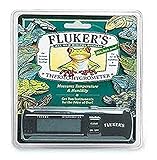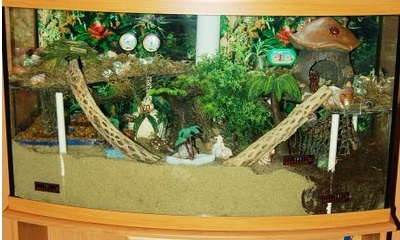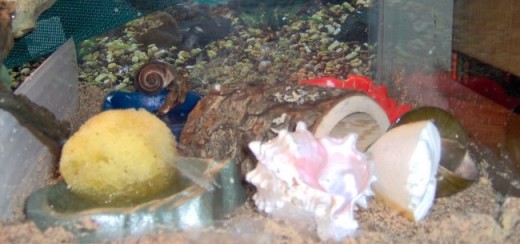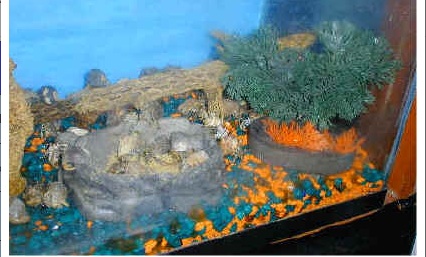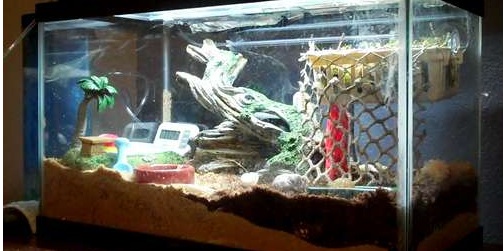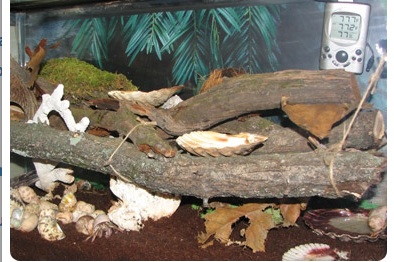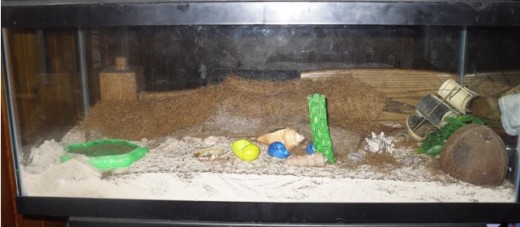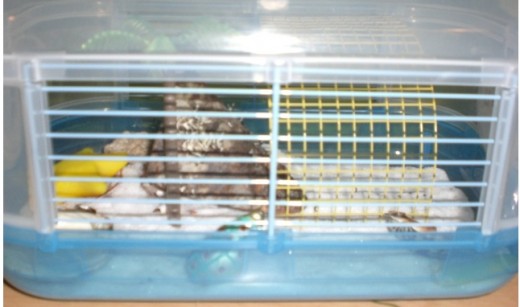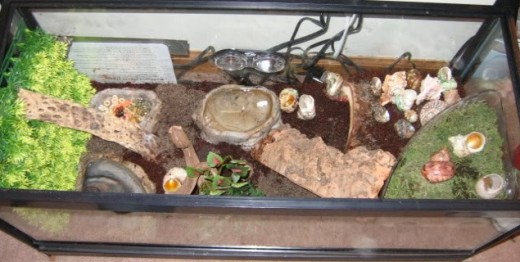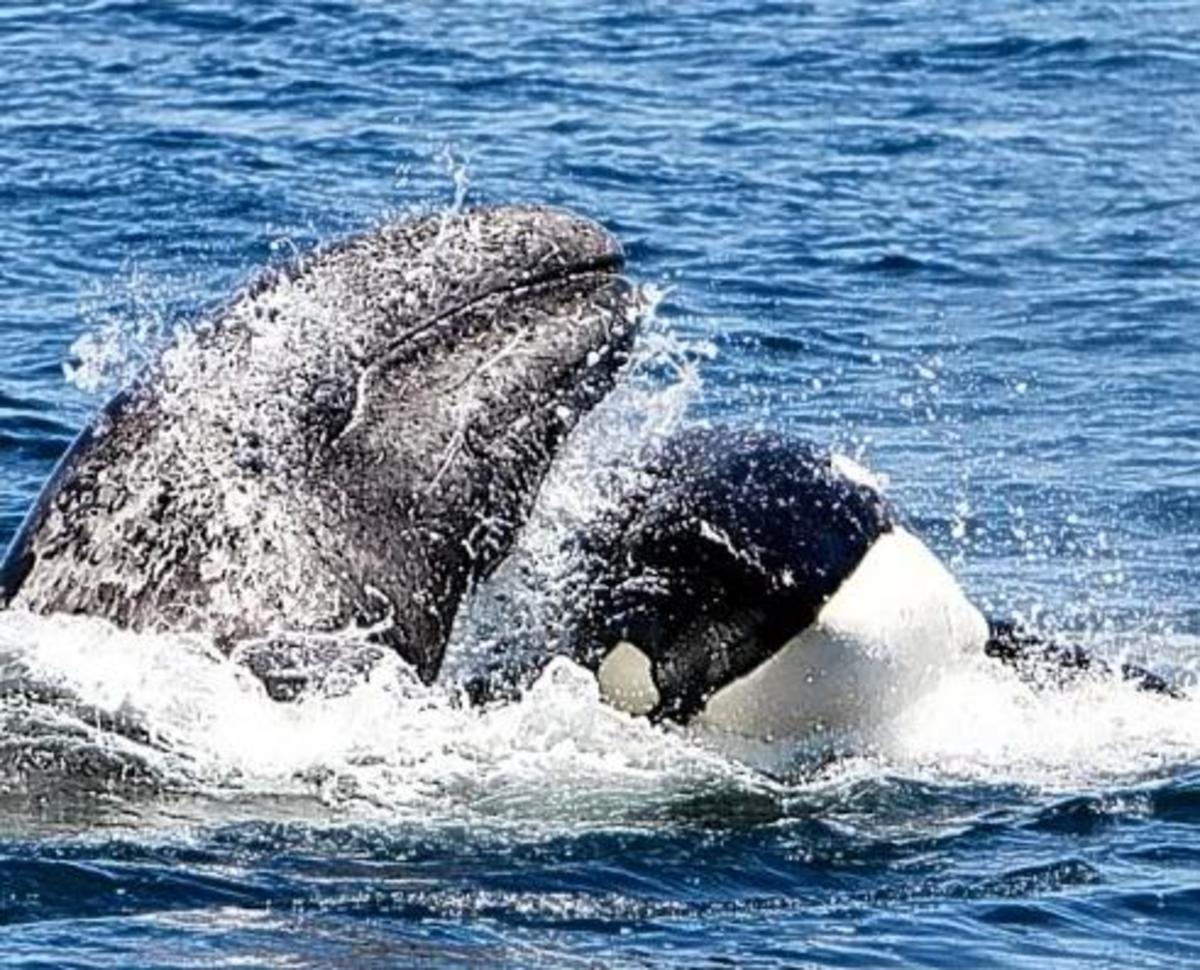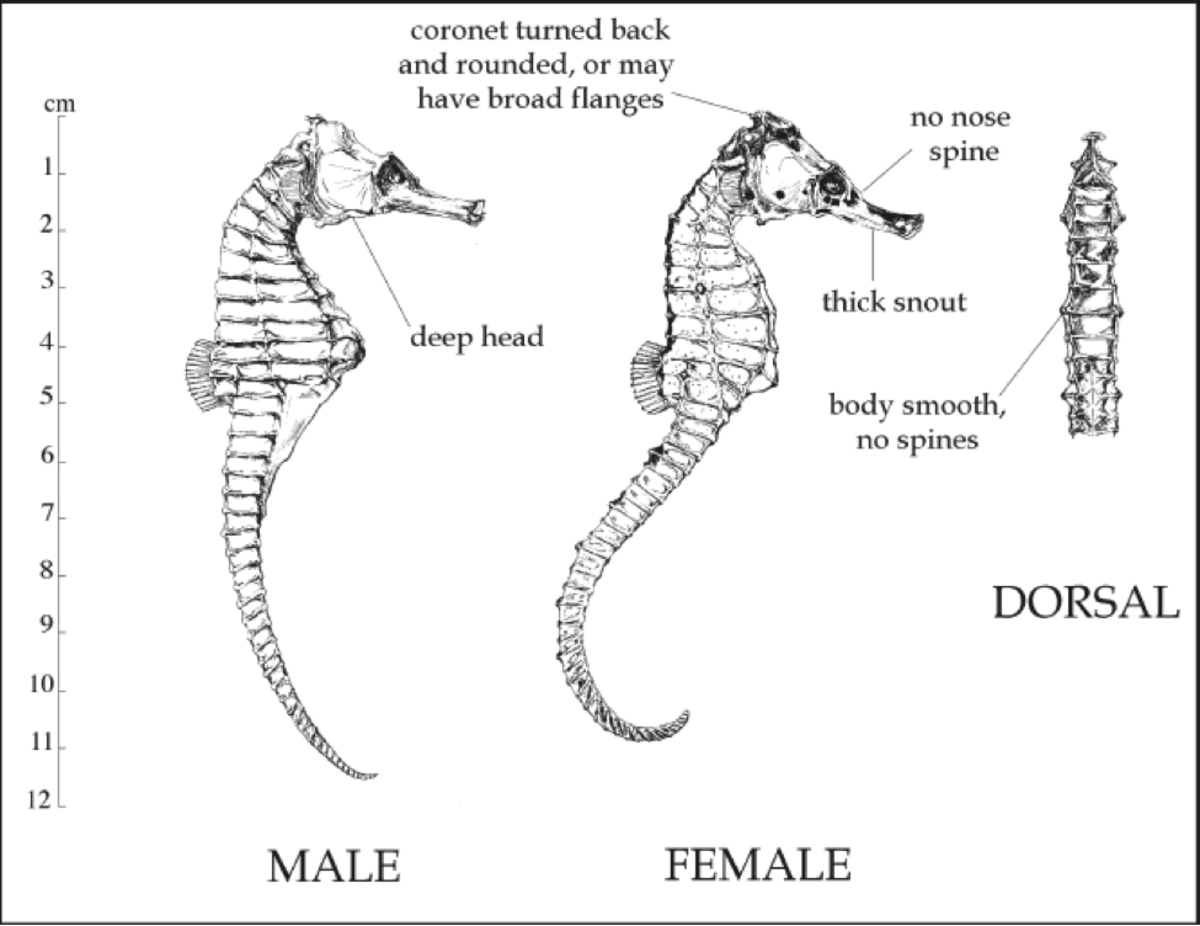- HubPages»
- Education and Science»
- Life Sciences»
- Marine Biology»
- Marine Life
Set Up a Hermit Crab Cage
Pet Hermit Crabs
Hermit crabs are popular pets. So many people buy them while at the beach, and bring them home with inadequate care information. When I was much younger, I did it; my parents bought me three small hermit crabs while at the beach. I brought them home thinking they didn't need any heating and keeping the environment dry was best. Boy, was I wrong, and as I got older, I learned proper care of hermit crabs.
When caring for hermit crabs, and setting up the enclosure, you want to consider the size of the enclosure and the material. It's best to avoid the wire crabatats, as the enclosure will need to be able to maintain humidity and heat. You want to purchase a plexi-glass aquarium. The plastic cages for hermit crabs are popular, but they do not heat well, as plastic melts.
Keep in mind that hermit crabs are social by nature, are are best housed with other hermit crabs. They can become quite stressed when housed by themselves. You want to use at least a 15 to 25 gallon tank, but as your hermit crabs grow, you'll probably need to upgrade.
When trying to find a place for your hermit crab cage, you'll want to place the enclosure where you'll be able to watch and enjoy your crabs. Some people recommend placing the tank in direct sunlight, but this can easily overheat the enclosure, especially if you have other heating sources. You just want to keep in mind that the animals are nocturnal and can get quite active at night, so keeping large hermit crabs in your room may cause a disturbance while you sleep.
Otherwise, when setting up a hermit crab cage, you want to consider temperature, humidity, substrate, and decor.
Hermit Crab Temperature and Humidity
Temperature
The temperature in the enclosure is very important. You want to monitor the temperature on an ongoing basis, so that you know how to increase or decrease the temperatures within the enclosure. Personally, I prefer using digital thermometers to monitor the temperatures, as they are more reliable. I would purchase two as, you will want one on each side of the tank, placing the probe on the substrate where your crabs are.
You want the temperature in the enclosure to be between 70F and 85F. If the temperatures are too low, your crabs will become more inactive, and if they're too high, they will overheat. Both extra low or high temperatures can kill your crabs, when left at those temperatures for extended periods.
Remember these are tropical animals and do best at slightly warmer temperatures. It's ideal to try to keep the temperature between 75F to 80F.
You can maintain proper heating by using a heat lamp and/or an under tank heater. There are many ceramic heat lamps that are ideal for heating, but do not
offer lighting; under tank heaters are great, but make sure that you follow the directions and prop up the tank a little to avoid heat stress cracks in your enclosure. It's not necessary to provide lighting, but you can offer lighting to create a day night scenario and for better viewing, but lighting won't necessarily boost your temperatures a substantial degree. You may have to play with different watts until you get the temperature the degree that you want it.
Humidity
Achieving proper temperatures are very important, but maintaining a good humidity level is essential. Hermit crabs need the moisture so to exchange carbon dioxide and oxygen. You want to maintain the humidity level between 70% and 80%.
The best way to achieve proper humidity is by using a shallow water dish and by misting the enclosure daily.
Substrate for Hermit Crab
There are many different options that you can consider for the substrate in your hermit crab enclosure. The most popular is going to be sand. Generally, you'll find loads of small bags of color sand, that feature hermit crabs on them, which is a very popular substrate, but there are other options that you can choose.
A few options that you may want to consider using in your hermit crab enclosure may include:
- Coconut Coir- You may find this in the shape of compressed bricks or loose in a bag. This is a great substrate to offer ideal humidity. It's not really reusable, but hermit crabs tend to love it. You want to be careful of the substrate getting too wet, as it can harbor bacteria.
- Gravel- This is a good substrate to consider, as there are many
different types of gravel. You want to chose the smallest, smoothest
gravel. This substrate can easily be cleaned and reused.
- Play sand- You can find many different colors of reptile sand or you may want to just purchase the regular play sand. Regular sand can be cheap and it's reusable, but it can be very messy when it gets wet and dries, especially when your hermit crabs soak in their water and then bury themselves; the sand will dry and stick onto the hermit crab. You just need to worry about misting the tank, causing mold to grow; also keep in mind the humidity levels.
- Reef Sand/ Crushed Coral- This is a nice sand alternative. It is a more gritty substrate that is rich in calcium and trace minerals that hermit crabs love. The concern is that the substrate can get quite dusty, so you want to shake it outside, and it can hold water, taking forever to dry. Although, you can reuse this substrate, it will wear away each time you wash it.
- Small river pebbles- These are easy to clean and can be less messy than sand and other substrates. You want to use small, smooth pebbles, because some hermit crabs may enjoy burying under the pebbles.
A nice alternative is to mix a 50/50 ratio of sand and coconut coir. You may also want to create different niches within the enclosure, with a dry side and a humid hide; this will enrich your hermit crabs and provide optimal housing.
Try to avoid using corn shavings, cedar, pine, damp moss, or other wood shavings. These can dry out hermit crabs, especially the corn and wood shavings. Plus, they can easily attract mites and other bugs.
Hermit Crab Accessories
When designing your hermit crab cage, you want to consider things for your hermit crab to hide in and climb on. Hermit crabs like to climb, and they like to explore, so you want to play on these tendencies when setting up a hermit crab enclosure.
- Choya Wood (for climbing)
- Driftwood (for climbing)
- Cork bark (for climbing)
- Wire mesh (for climbing)
- House (coconuts, logs, etc)
- Extra shells
- Sponges
- Food and water dishes
- Plants (real or fake)
Choose natural décor. Plastic is ok but should be closely monitored; painted objects should be avoided if possible, as hermit crabs will eat the paint.
If you opt to find things in your yard, you want to make sure that you properly disinfect the objects. It's ideal to freeze the objects in the freezer, thaw to room temperature, and then bake in the oven at 350F for about an hour. This will get rid of nearly all bacteria, bugs, and parasites.
Sponges
When setting up an enclosure for hermit crabs, water is essential. Your hermit crabs will not live long without a proper water source, as dehydration is the main cause of death with hermit crabs. These animals have gills and need to absorb moisture at all times. You want to offer damp sponges, as well as a water bowl, for them to soak in.
Many keepers will also mist their hermit crabs daily. Also, try to soak your hermit crab about 2 to 3 times a week; you can get by in having a water bowl that the hermit crab can soak in, just make sure that you offer fresh water daily.
Consider using distilled water or treat tap water with a dechlorinator. Also, keep in mind that some hermit crab species like salt water, so for these species, you may need to include a salt water pool; for these pool, purchase a hermit crab safe salt.
Extra Shells
It's very important that you offer multiple shells for your hermit crab to have options. You want to have shells that are about the same size as your hermit crab, as well as larger sizes. You want to consider shells of different types as well, as some hermit crabs prefer certain types and shapes of shells.
It's a good idea to purchase a bulk lot of shells, so that you can choose which ones you want to include in your tank. These will serve as nice décor pieces, but they are functional, as your hermit crabs will need them to change into as they grow.











